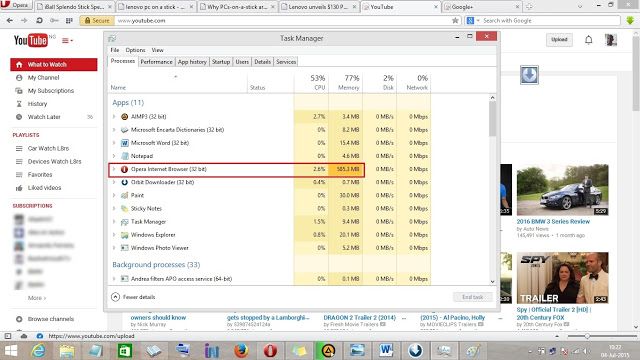When Microsoft announced that any PC capable of booting Windows 7 or Windows 8/8.1 would be sufficient to boot Windows 10, many PC manufacturers and retailers were irked because it meant many users wouldn’t be upgrading their hardware which in turn meant lower sales for them. Keeping the requirements for Windows 10 the same as those for Windows 7 and 8 makes a lot of sense because it means more people will upgrade to the new OS – something Microsoft desperately needs and wants. But Microsoft may have done itself (and Windows 10) a disservice by allowing 2GB of RAM as a sufficient minimum. That’s because there’s a difference between booting Windows and running Windows.
A fresh installation of Windows (7 or 8/8.1) with no 3rd party apps will work just fine with 2GB of RAM. But there’s hardly any category of users that will use Windows without installing a few third party apps. Many of these apps (built-in apps included) have a few components that load automatically after Windows starts; some as background processes, some as system tray utilities or a combination of both. These components all use part of the RAM. There’s also a portion of RAM used as video memory in computers without a dedicated graphics card.
Then there is the issue of actually surfing the web. Though Microsoft would love for all Windows 10 users to use their new web browser, Edge, for all their browsing needs, the truth is many users will employ a combination of different browsers. Having as little as 6 tabs open in Firefox or Opera will use upwards of 500MB of RAM. Google Chrome reportedly uses much more. With all the above, there is little RAM left to keep the system running smoothly. I can tell you from experience that even a properly optimised PC with just 2GB of RAM will at most times become very sluggish when running multiple browser tabs which includes one tab for Youtube and one for Google +.
While the RAM of most PCs can be upgraded/increased, there are a few devices that can’t be upgraded. – the PC-on-a-stick and 8 inch Windows 8x tablets. Though I am yet to determine which categories of users these PC sticks are appropriate for, all the examples unveiled thus far have just 2GB of RAM. And their processors are relatively underpowered. Examples include the Compute Stick by Intel, Splendo by iBall and Microsoft and Ideacentre Stick 300 by Lenovo. Also, 8-inch Windows tablets from Dell, Lenovo and Toshiba, all ship with 2GB of RAM.
One thing is certain: by allowing PCs with just 2GB of RAM to run Windows 10, Microsoft is inadvertently ensuring that some users would have a less than pleasant / ideal experience with Windows. After all, there’s a reason why the Surface Pro series and Surface 3 tablets ship with a minimum of 4GB of RAM.
Editor’s note: This post appeared first on Wale Sanusi’s blog as “4GB of RAM Should Be the Minimum for Windows 10”. You can follow him on Twitter @waleesa1.












